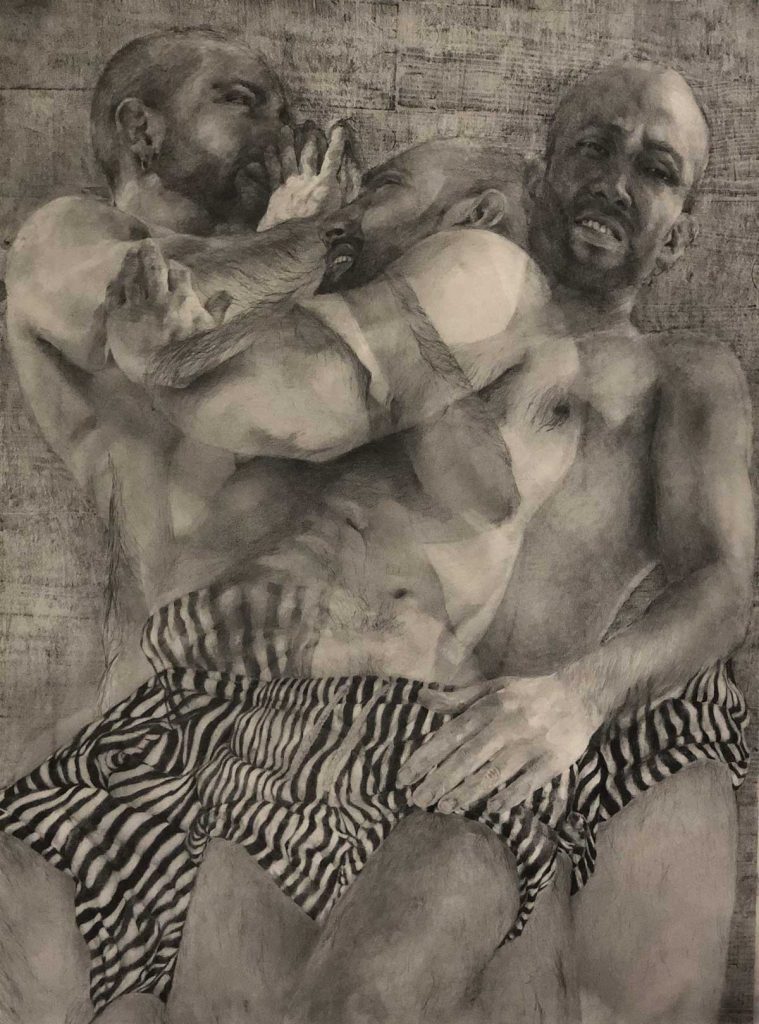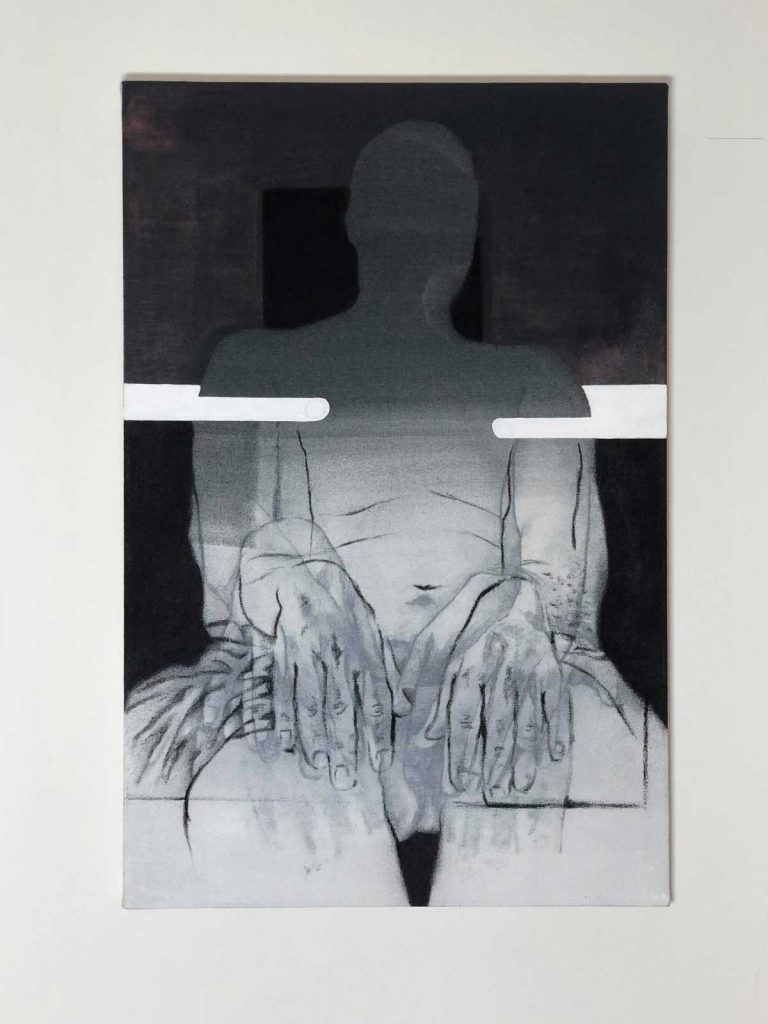Spyros Procopiou is a visual artist who practices between the US and Cyprus. As of recently, he is also one of the four artists represented on peri-Tēchnes. He received his Bachelor’s degree from the Aristotle University, Greece (2016), and his Master of Fine Arts, with a focus on drawing and printmaking, from the New York Academy of Art (2019). Procopiou’s practice is diverse and has grown in the latest years to include engraving, sculpture, painting, digitally edited work, and installation. I, personally, came to know him initially for his paintings, drawings, and sculpture. It is about his paintings and drawings, that we got together to discuss, on the occasion of such works of his featured on his artist’s page.
Procopiou’s work is primarily anthropo-centric. The artist begins from the human form, as one familiar to all viewers. In doing so, he creates works through which he aims to better communicate and connect with them. The human form connects everyone universally, and by incorporating it within his work, Procopiou communicates what he intends to while simultaneously leaving room to the viewers to draw their own conclusions.

More specifically, Procopiou uses the body to allude to aspects of the human condition. Innocence, eroticism, decay, corruption, and death are prevalent themes in his work. They are present throughout his entire practice and across all media. The artist is fascinated by the delicate boundary between death and eroticism that spurs him into the exploration of the human stance toward illness, deformation, and an instinctive repulsion towards imperfection. He is fascinated by the almost innate aversion society demonstrates towards a deformed or imperfect form. As a result, Procopiou combines and layers bodies or multiple motions of a body on a single plane. The end result calls the eye to trace the movement, trapping it in a loop of discerning one, clear, single form. In this way, Procopiou creates a magnetic allure in paintings and drawings.
The primary materials the artist uses to draw are pencil, chalk, and charcoal. Through the misty grey shadow that he creates on the canvas or paper, his layered forms unite in an almost illusory way. Thus, Procopiou creates a mystery behind the bodies he portrays and overlaps in his works.
Influenced by Damien Hirst’s approach towards the representation of death, and Aleah Chapin’s approach to the nude, Procopiou, in turn, combines different human bodies or body parts. The painstaking realism in which he renders these parts can be observed alongside work by Jenny Saville. In her last exhibition at Gagosian, we had the opportunity to see the ease with which she too layers bodies, oscillating between cubism and renaissance-level realism. Saville had noted that blurring the boundaries between her layered forms connects them to the point where they appear as one. This, she said, allows her to draw the viewer in and to question what they see and how they understand it. She gives room to contemplate what memory is alluded to in her painting, leading to the question of who that memory belongs to.
Procopiou, in turn, by blurring and joining body parts on his canvas, calls the viewer to question what they see. He challenges them to observe the human condition alongside decay and the loss of innocence—the two main elements of the tragedy and vitality of human life. As a result, we see all the contradictory states of existence, common within everyone, in his works.

©Spyros Procopiou 2020
On that subject, the prevalence of concepts of decay and corruption in Procopiou’s work nudges toward works by Marlene Dumas, Cecily Brown, and Sarah Lucas. One more aspect of his work, however, which brings the mind to Cecily Brown’s paintings specifically is how both artists layer bodies.
Layering in both their work allows the viewer to almost track the artists’ thought patterns or explorations on the canvas while giving a sense of the work being unfinished. In the exhibition Cecily Brown: Rehearsal at The Drawing Center in 2016, Brown’s drawings allow one to see the exact areas she revisited and how often. Simultaneously it allows for mapping the gestural movements that interested her in the originals she was drawing from. As a result, Brown’s drawings demonstrate a dynamic character that is non-finite. Procopiou’s bodies, layered over each other in rapid gestural strokes give a similar sense of dynamism, as though the work is alive, and still in progress. Observing the gestural strokes of pencil or charcoal additionally allow a peek into his process, and where the artist focused or transitioned.

©Spyros Procopiou 2020
Nevertheless, through his work, Procopiou has launched an effort to record his own evidence and to clarify his personal concerns around the body and the human condition. His exploration of the body is more conceptual and less practical. It is not a study of the human form either independently or as it appears in historical works. Rather, it is a study of the body as the vessel within which a being lives, a vessel that can be imperfect, or sub-par by any societal standards that have prevailed since antiquity. This exploration of self places the artist’s work on the border between utterly personal yet simultaneously universal. It is a vulnerable practice, on his part, that grants him further freedom to connect with the viewer while also connecting with his own being. Procopiou’s work is truly a testament to the age-old belief that art unites.
See available works by Spyro Procopiou on his artist’s page found under our new tab “Artists.” Submit your email there, or send us a message at peri-Technes@outlook.com.
